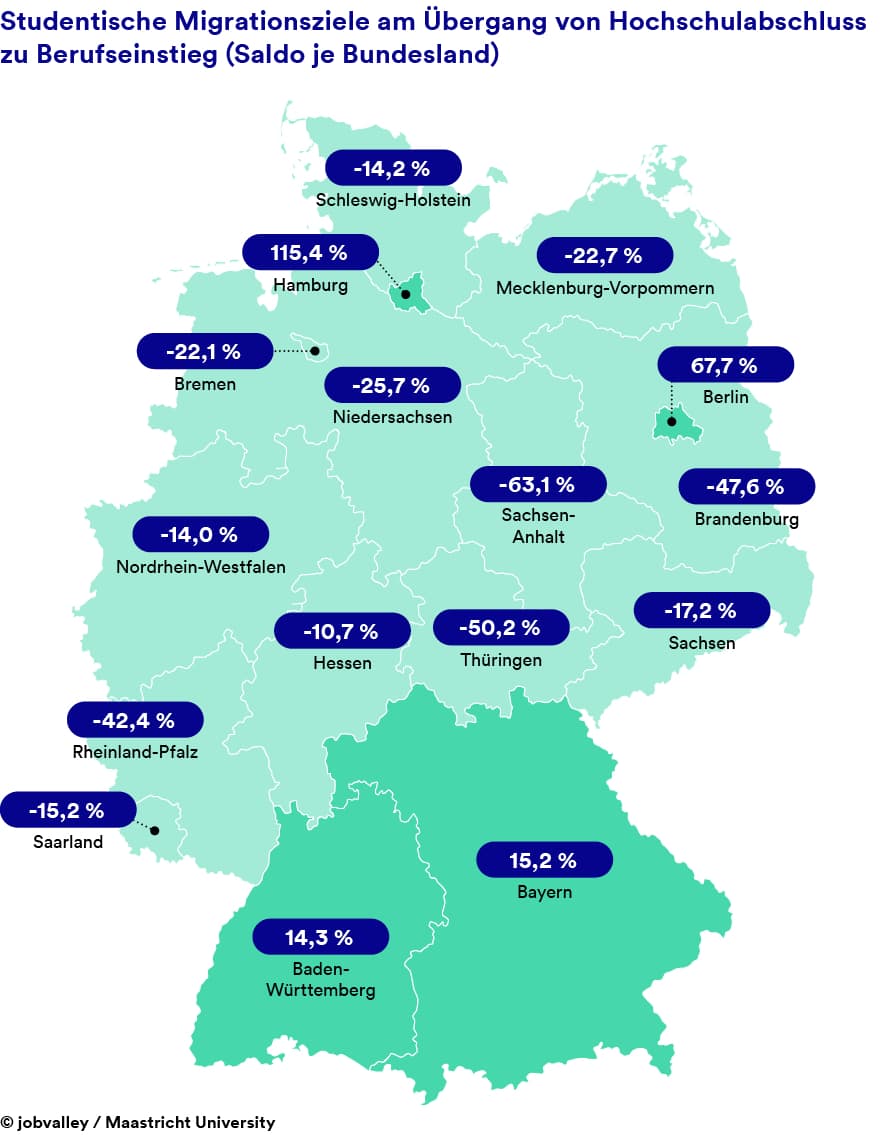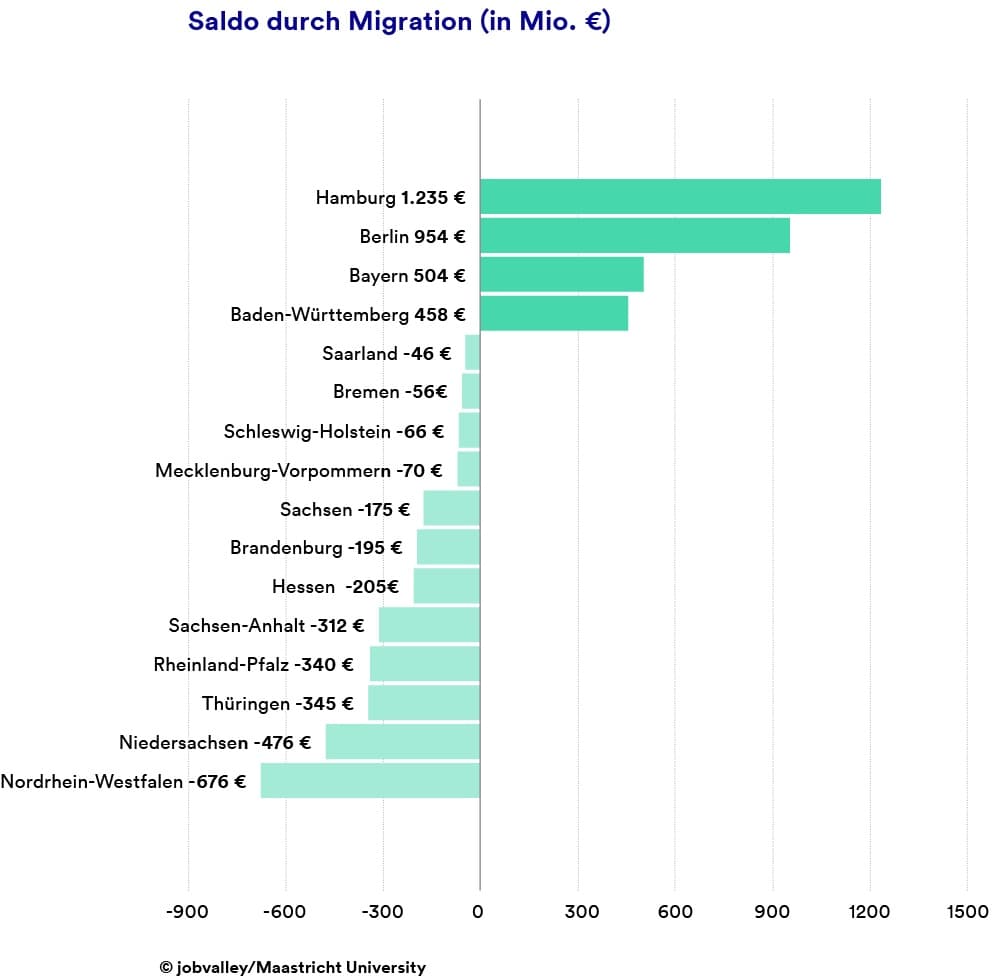After graduating from school is before starting university. And so many students are initially drawn out into the world and, at the start of their studies, to sought-after university cities - usually in different German states. However, the countries that are still in high demand among prospective students are not the same ones that are in demand after graduation.
These findings emerge from the new study on internal migration, which we prepared together with the Department of Labor Economics at Maastricht University as part of our "Fachkraft 2030" series. Around 22,000 students in Germany took part in the survey.

Winners and losers
Only four German states have a positive balance, including the industrial and economically strong south with Bavaria and Baden-Württemberg and the metropolitan areas of Berlin and Hamburg. These states receive more university graduates for the labor market than they themselves have trained. The biggest loser is Saxony-Anhalt with a negative balance of 63.1%. This means that in Saxony-Anhalt, for example, for every 10 students, only 4 want to enter the workforce.
Due to the strong migration of academic specialists to four federal states, the educational costs for their studies are distributed very unevenly. In other words, other German states bear the educational costs for the workforce of these winning states.
Biggest winner: Hamburg with an increase of over 1.2 billion euros
Biggest loser: NRW with a minus of more than 676 million euros
The balance in Hamburg of almost 116% means that for every 100 Hamburg students, there are 216 graduates who stay in Hamburg after graduation or move from other federal states. The other 12 states, on the other hand, educate more students than they can attract or retain.
This consolidates a trend that was already apparent in our last study on this topic in 2018. While the city states of Berlin and Hamburg as well as the industrialized south benefit from well-educated university graduates, locations in the new federal states often go empty-handed. Although they bear the high educational costs for the students. - Eckhard Köhn, CEO jobvalley
The ranking remains largely unchanged compared with 2018. It should be emphasized, however, that Hamburg and Berlin are also becoming less attractive - compared with 2018, they have a positive balance that is 44.2 and 10.7 percentage points lower, respectively. On the other hand, the surrounding states are gaining: Brandenburg has a plus of 9.5 %-points compared to 2018, Schleswig-Holstein a plus of 5.9. North Rhine-Westphalia, on the other hand, has lost significantly from -8.1 % to -14.0 %.
Rent is a huge cost item for young professionals. Both Hamburg and Berlin have seen explosive price increases in this area. This makes the surrounding states all the more interesting for university graduates. In addition, we also see an increase in Saxony (6.5 percentage points compared to 2018), which is probably due to the increased attractiveness of Leipzig, for example, among young people - a lot of quality of life for comparatively low rents. Such rules do not seem to apply to Bavaria and Baden-Württemberg: Both states are even gaining in attractiveness, despite a high cost of living - strong industry remains a draw there. - Eckhard Köhn, CEO jobvalley
Education costs: New federal states pay for Hamburg, Berlin, Bavaria and Baden-Württemberg
Every student costs the federal state money because of the education. An unequal distribution of education costs is not conducive to this, since economically strong states are already co-financed by the others. If a well-educated specialist is lost when he or she moves to a state with a stronger economy, he or she also loses the education costs that were previously invested.

Hamburg gains more than 1.2 billion euros per year this way. North Rhine-Westphalia, on the other hand, invests around 676 million euros annually, which benefits other states.
There are definitely opportunities to avoid the brain drain to other states. Companies and the federal states must start recruiting future skilled workers while they are still studying. This can be done by offering attractive student jobs that are close to the time of study and already offer opportunities for advancement, as well as early offers of employment. As a digital platform for flexible working and Workforce as a Service service provider, as well as an employer of more than 10,000 students and young professionals every month, we also recommend this to our corporate partners - and they are successful in doing so. - Eckhard Köhn, CEO jobvalley


